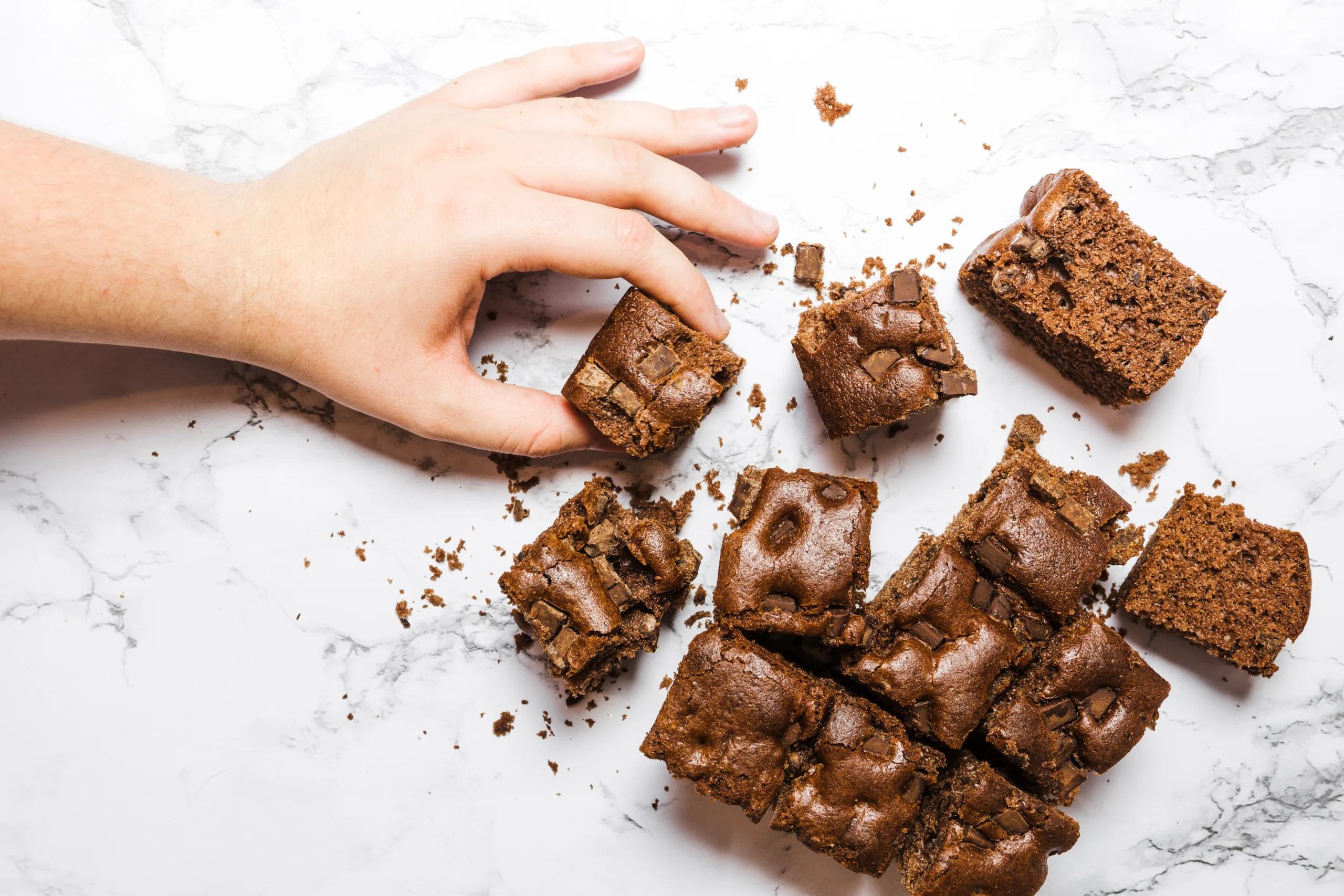Discover how to improve your brownie game with the rich, nutty flavor of Brown Butter Brownies. This ultimate guide walks you through every detail, helping you create the perfect brown butter brownies recipe. From understanding ingredients to mastering techniques, you’ll find everything you need to impress friends and family with this decadent dessert.
Introduction to Brown Butter Brownies
Brown Butter Brownies are a sophisticated twist on traditional brownies. The process of browning butter develops its flavor, adding a nutty richness that transforms a simple treat into a gourmet experience.
Want to save this recipe?
Enter your email to get it sent to your inbox! Plus you'll get new recipes from us every week.
Brown butter not only intensifies the flavor but also gives the brownies a chewy texture and golden hue. Whether you’re a seasoned baker or just starting, this guide will help you achieve bakery-level results.
Table Of Contents
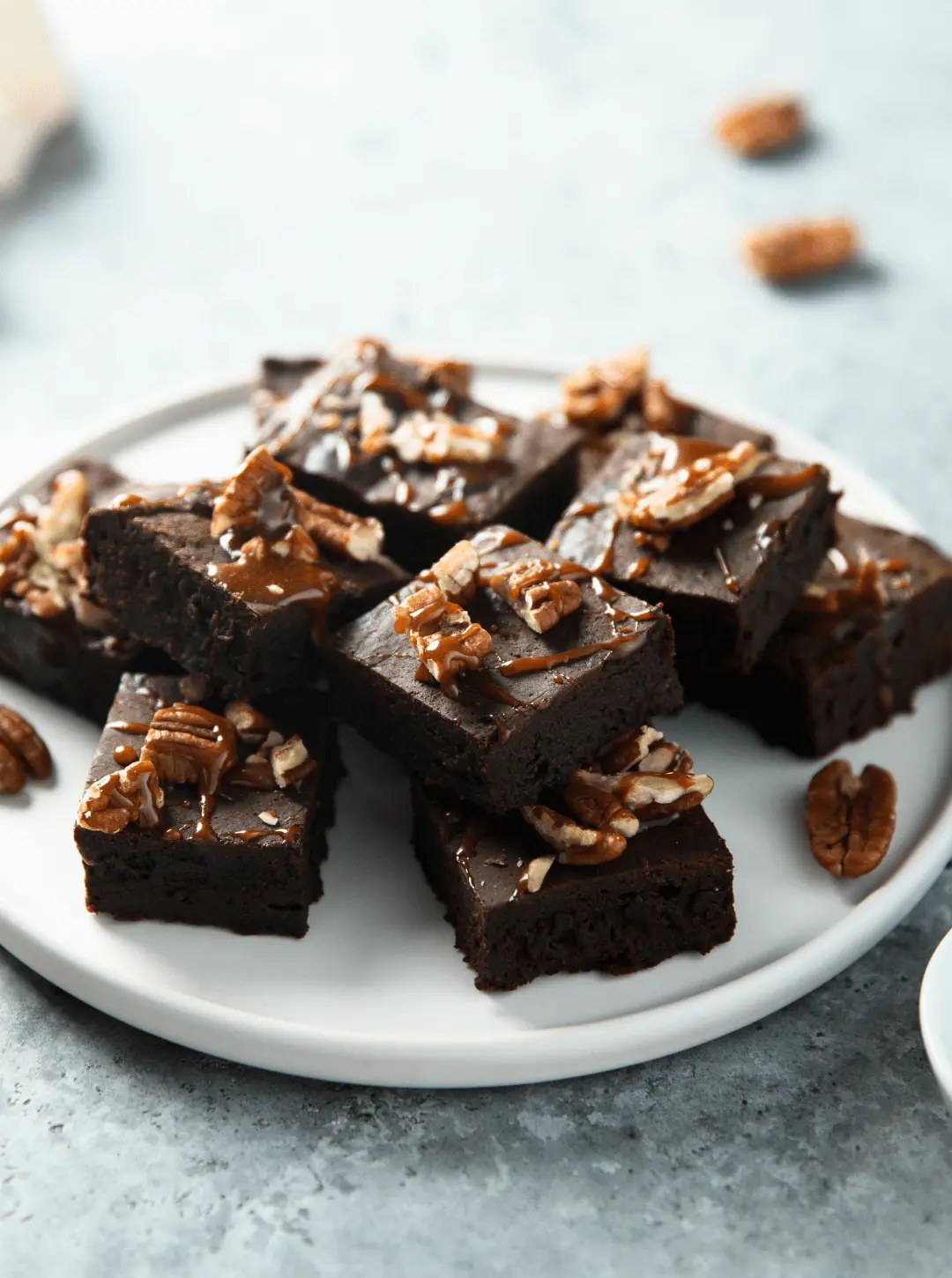
Why Choose Brown Butter Brownies?
- Rich flavor: Brown butter deepens the chocolatey base.
- Easy customization: Add nuts, sea salt, or caramel for unique twists.
- Crowd-pleaser: Perfect for any occasion or dessert table.
Understanding Brown Butter Brownies
Before diving into the recipe, let’s understand what makes brown butter so special.
What is Brown Butter?
Brown butter, or beurre noisette, is simply butter cooked until the milk solids caramelize. This process creates a deep, nutty aroma and flavor that makes baked goods stand out.
Key Benefits of Using Brown Butter
- Adds a toasty complexity to recipes.
- Intensifies the chocolate flavor in brownies.
- Creates a firmer, chewier texture.
How to Make Brown Butter for Brownies
- Heat unsalted butter in a saucepan over medium heat.
- Stir constantly until the butter turns golden brown and develops a nutty aroma.
- Remove from heat immediately to avoid burning.
- Let it cool slightly before using it in your recipe for brown butter brownies.
Ingredients for Brown Butter Brownies
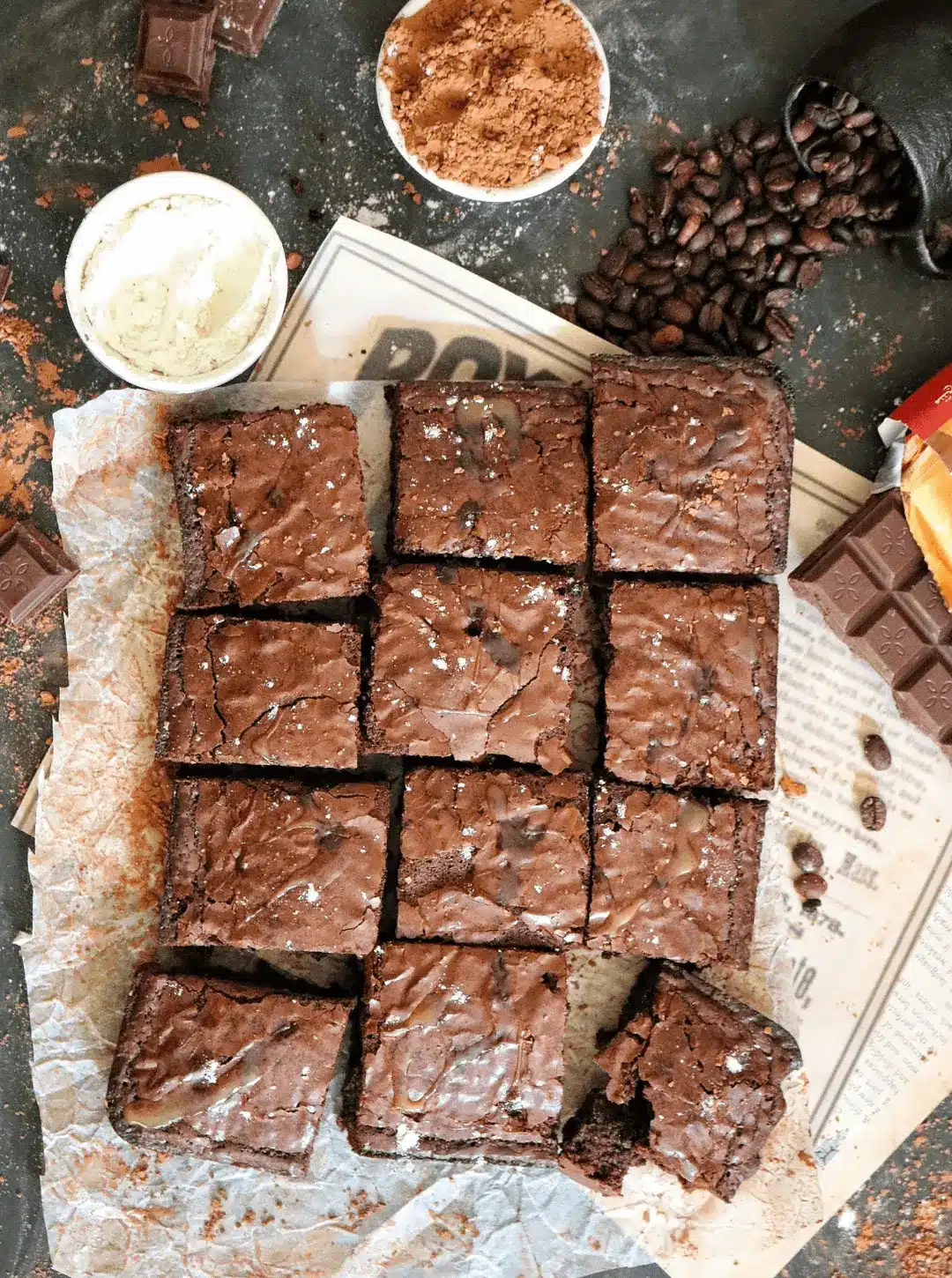
The right combination of ingredients guarantees your brownies have the perfect balance of flavor and texture.
Essential Ingredients
- Unsalted butter: Browning is the star of the recipe.
- Granulated sugar: Provides sweetness and structure.
- Brown sugar: Adds moisture and deepens the nutty flavor.
- Cocoa powder: Use high-quality for a richer chocolate taste.
- All-purpose flour: Creates a balanced texture.
- Eggs: Keep the brownies moist and chewy.
- Vanilla extract: Complements the chocolate and butter flavors.
- Salt: Balances and brings all the flavors.
Optional Additions
- Chopped nuts: Walnuts or pecans add crunch.
- Sea salt flakes: Sprinkle on top for a sweet-salty contrast.
- Chocolate chunks: For gooey pockets of chocolate.
Tools and Equipment You’ll Need
Having the right tools makes baking smooth and straightforward.
Essential Tools
- Mixing bowls: Use at least two – one for wet ingredients and one for dry.
- Whisk and spatula: For mixing and folding the batter.
- Saucepan: To brown the butter.
- 8×8-inch baking tray: Assures even baking.
- Parchment paper: Makes it easy to remove brownies from the pan.
- Measuring cups and spoons: For accurate ingredient measurements.
Optional Equipment
- Stand mixer or hand mixer: Speeds up mixing.
- Sifter: Prevents lumps in dry ingredients.
- Offset spatula: Helps spread the batter evenly.
Step-by-Step Recipe Guide
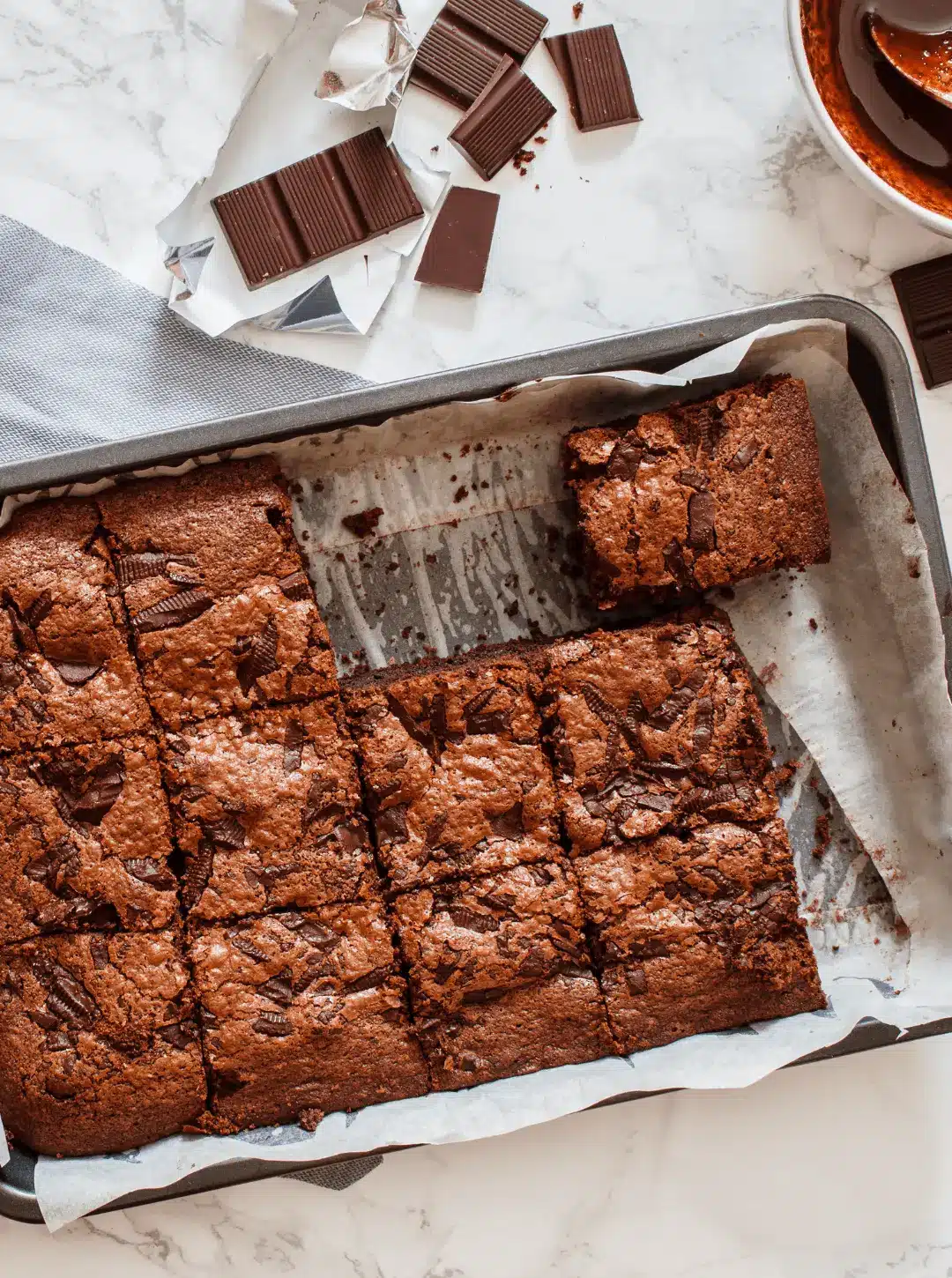
Preparing the Ingredients
- Preheat your oven to 350°F (175°C) and line your baking pan with parchment paper.
- Brown the butter as explained earlier, then let it cool slightly.
- Measure all ingredients accurately to achieve consistent results.
Mixing the Batter
- Combine the cooled brown butter, sugars, and vanilla extract in a mixing bowl.
- Add the eggs one at a time, whisking vigorously to incorporate air for a chewy texture.
- Sift the cocoa powder, flour, and salt into the wet ingredients, then fold gently until combined.
Baking the Brownies
- Pour the batter into the prepared pan, spreading it evenly.
- Bake for 25–30 minutes, or until a toothpick inserted in the center comes out with a few moist crumbs.
- Let the brownies cool completely before cutting to achieve clean slices.
Variations of Brown Butter Brownies
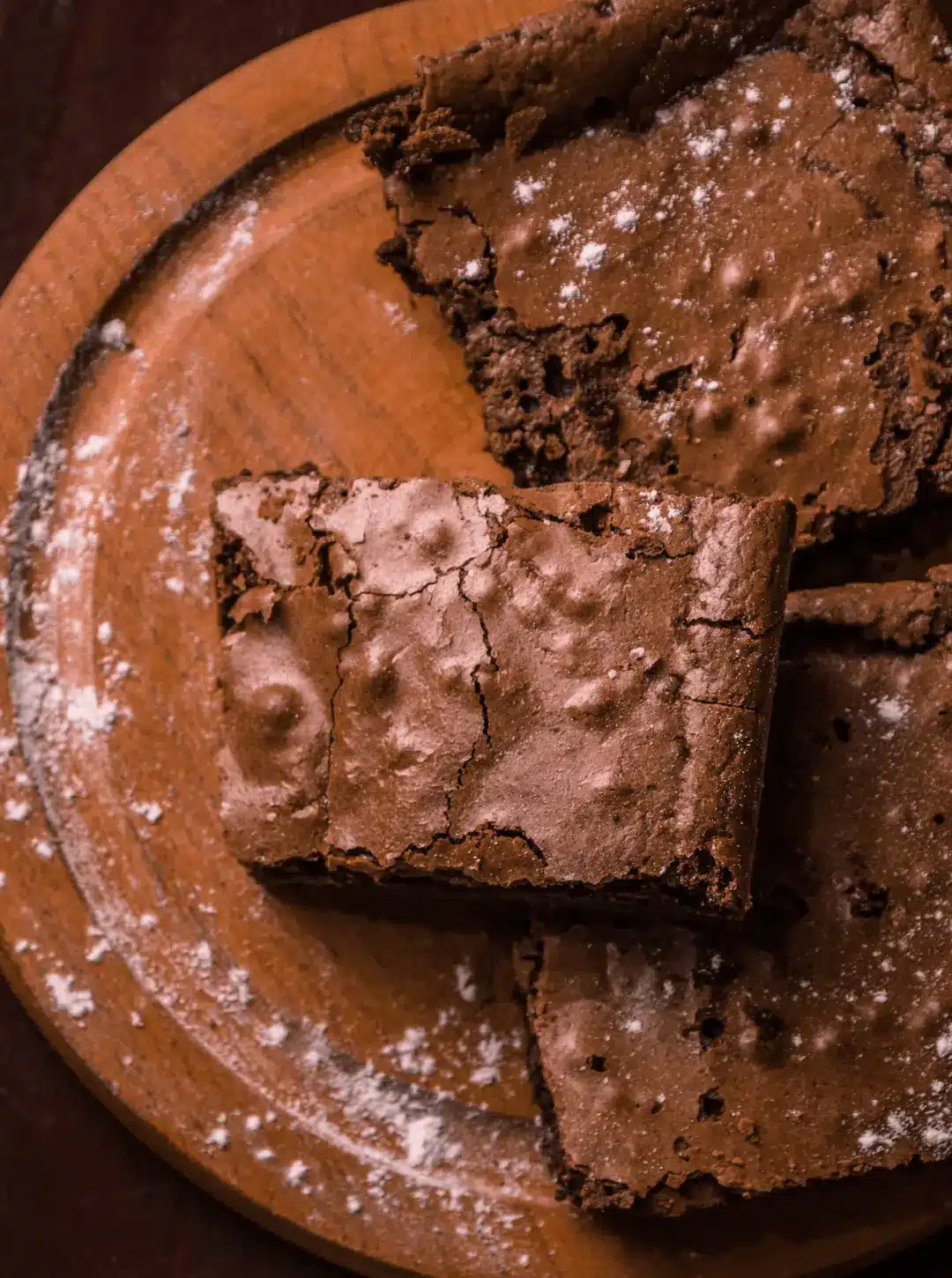
Experiment with these creative twists to customize your recipe for brown butter brownies.
Flavor Additions
- Peanut Butter Swirl: Add dollops of peanut butter before baking.
- Espresso Powder: Intensifies the chocolate flavor.
- Orange Zest: Adds a refreshing citrus note.
Texture Changes
- Cookie Crust: Press a cookie dough layer into the pan before adding brownie batter.
- Marshmallows: Top the batter with mini marshmallows for a gooey finish.
Presentation and Serving Tips
Make your brownies look as good as they taste.
- Cutting and Plating: Use a sharp knife dipped in hot water for clean cuts. Serve on a plate with a drizzle of chocolate syrup or caramel.
- Pairing Ideas: Serve warm with vanilla ice cream or fresh berries for contrast.
Storing and Reheating
- Storage: Store in an airtight container at room temperature for up to 4 days.
- Freezing: Wrap individually and freeze for up to 3 months.
- Reheating: Microwave for 10–15 seconds for a fresh-from-the-oven texture.
Stay Connected for More Delicious Recipes!
Love trying new and exciting recipes? Don’t miss out! Follow me for daily kitchen inspiration, exclusive cooking tips, and mouthwatering food ideas.
🔹 Facebook: Follow me here
🔹 Instagram: Join me here
🔹 Pinterest: Join me here
Let’s turn every meal into a masterpiece—one recipe at a time! Tag me when you try my dishes, and share your creations. Happy cooking! 🍓🔥 #PanoramaRecipes
FAQs
What does brown butter do to brownies?
Brown butter brings a rich, nutty flavor to brownies, enhancing their overall taste. The browning process caramelizes the milk solids in the butter, creating a toasty, almost caramel-like aroma that complements the chocolate in brownies beautifully.
Why do you brown butter for baking?
Butter browning brings deeper, more complex flavors to baked goods. More specifically, the process develops an aromatic and nutty quality that highlights recipes, making them richer and more gourmet. Additionally, it can add subtle golden undertones to the finished product.
Why do you melt butter for brownies?
Melted butter gives brownies a denser, fudgier texture compared to using softened or creamed butter. Moreover, it allows the fat to be evenly distributed throughout the dough, which is essential for achieving that iconic, gooey consistency.
Which is better in brownies, oil or butter?
The choice depends on your desired outcome:
Butter adds richness and flavor, especially when browned, making it ideal for decadent, flavorful brownies.
Oil produces a slightly moister, softer texture but lacks the depth of flavor that butter provides.
Ultimately, butter is preferred for flavor, while oil is often chosen for ease and moisture.
Can I substitute brown butter for oil in brownies?
Yes, brown butter can replace oil in brownies. However, because brown butter is more flavorful, the substitution will slightly alter the taste, making the brownies richer and more complex. For a direct swap, use an equal amount of brown butter in place of oil.
How much butter equals 1/2 cup of oil?
To replace 1/2 cup of oil, you’ll need about 2/3 cup of butter. This adjustment accounts for the water content in butter, which is absent in oil.
How do I convert butter to oil for baking?
To convert butter to oil:
Use 3/4 the amount of oil for the butter listed in the recipe. For example, if a recipe calls for 1 cup of butter, use 3/4 cup of oil.
Remember, oil lacks the flavor of butter, so consider adding a touch of vanilla or another flavoring for balance.
How much oil is in 1 stick of butter?
One stick of butter (1/2 cup) is roughly equivalent to 3/8 cup of oil, or about 6 tablespoons.
Can I use olive oil instead of vegetable oil?
Yes, olive oil can replace vegetable oil in brownies. However, use light or mild olive oil to avoid a strong, savory flavor. If you’re using extra virgin olive oil, the brownies may have a subtle, fruity undertone, which can complement chocolate nicely in certain recipes.
What does olive oil do to brownies?
Olive oil makes brownies moist, tender, and slightly denser. Depending on the type of olive oil used:
Light olive oil has a neutral flavor and won’t alter the taste.
Extra virgin olive oil can add a subtle fruity or peppery note, which can pair well with chocolate in some recipes. It also provides healthier fats compared to traditional vegetable oil.
What is the healthiest oil for baking cakes?
The healthiest oils for baking cakes are:
Avocado oil: High in monounsaturated fats and neutral in flavor.
Coconut oil: Offers a slightly sweet flavor and is rich in medium-chain triglycerides (MCTs).
Olive oil: Rich in antioxidants and heart-healthy fats, especially if you use extra virgin olive oil.
Canola oil: A lighter option low in saturated fats.
These oils are better choices for health-conscious bakers, depending on flavor preferences.
Why do chefs use olive oil instead of vegetable oil?
Chefs often use olive oil because:
Flavor: Extra virgin olive oil adds complexity and taste to certain baked goods.
Health benefits: Olive oil is rich in healthy fats and antioxidants, making it a nutritious alternative.
Versatility: Olive oil works well in both sweet and savory dishes, making it a staple ingredient in many kitchens.
Is it okay to bake with olive oil?
Yes, it’s entirely possible to bake with olive oil. In fact, olive oil can improve baked goods by keeping them soft while adding a subtle depth of flavor. For delicate desserts, like cakes or cookies, use light olive oil to avoid overpowering the taste. For bold flavors, such as chocolate-based recipes, extra virgin olive oil can work beautifully.
What oil is best for boxed cake mix?
The best oils for boxed cake mix are:
Vegetable oil: Neutral and affordable, it’s the most commonly recommended.
Canola oil: A close alternative, offering a similar neutral flavor.
Light olive oil: Provides subtle flavor without overpowering the cake.
Coconut oil: Adds a slight sweetness and works well in tropical or vanilla-flavored cakes.
Choose based on the flavor profile you want and the nutritional benefits you prefer.
What is a good substitute for vegetable oil in baking?
Great substitutes for vegetable oil in baking include:
Melted butter: Adds richness and a creamy flavor.
Applesauce: Reduces fat content while keeping baked goods moist.
Coconut oil: Provides a slightly sweet, tropical flavor.
Greek yogurt: Adds moisture and a subtle tang.
Mashed bananas: A natural, healthy substitute with added sweetness.
The choice of a substitute depends on the recipe and the desired flavor and texture.
Conclusion: Your Journey to Perfect Brown Butter Brownies
Mastering a recipe for brown butter brownies is about paying attention to each step and enjoying the process. By browning the butter, selecting quality ingredients, and experimenting with creative variations, you can craft brownies that leave a lasting impression.
Whether for a casual gathering or a formal event, these brownies are a testament to the art of baking. Gather your ingredients and start creating your version of this decadent dessert today
Stay Connected for More Delicious Recipes!
Love trying new and exciting recipes? Don’t miss out! Follow me for daily kitchen inspiration, exclusive cooking tips, and mouthwatering food ideas.
🔹 Facebook: Follow me here
🔹 Instagram: Join me here
🔹 Pinterest: Join me here
Let’s turn every meal into a masterpiece—one recipe at a time! Tag me when you try my dishes, and share your creations. Happy cooking! 🍓🔥 #PanoramaRecipes
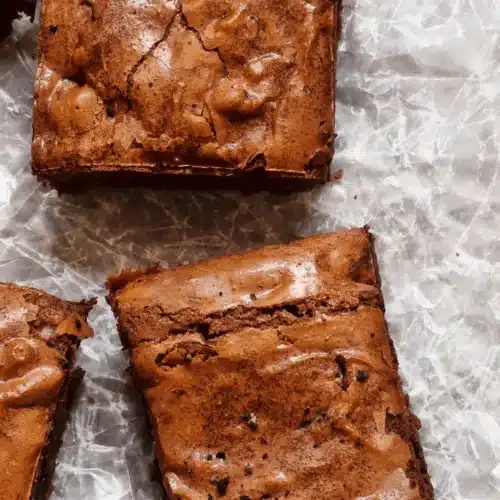
Brown Butter Brownies
Equipment
- Saucepan (for browning butter)
- Mixing bowls (at least 2: one for wet, one for dry ingredients)
- Whisk and spatula
- Measuring cups and spoons
- 8×8-inch baking pan
- Parchment paper
- Sifter (optional, for dry ingredients)
- Offset spatula (optional, for spreading batter)
- Stand or hand mixer (optional, for easier mixing)
Ingredients
- ¾ cup 170g unsalted butter
- 1 cup 200g granulated sugar
- ½ cup 100g brown sugar, packed
- ¾ cup 65g unsweetened cocoa powder
- 2 large eggs
- 1 tsp vanilla extract
- ½ cup 60g all-purpose flour
- ¼ tsp salt
- Optional Additions:
- ½ cup chopped walnuts or pecans
- ½ cup chocolate chunks or chips
- Flaky sea salt for topping
Instructions
- Preheat your oven to 350°F (175°C). Line an 8×8-inch baking pan with parchment paper.
- In a saucepan over medium heat, melt the butter. Stir constantly until it turns golden brown and gives off a nutty aroma. Remove from heat and let cool for 5–10 minutes.
- In a large mixing bowl, whisk together the browned butter, granulated sugar, brown sugar, and vanilla extract.
- Add the eggs one at a time, whisking vigorously after each addition to incorporate air and ensure a chewy texture.
- Sift in the cocoa powder, flour, and salt. Fold gently with a spatula until just combined.
- Stir in optional add-ins like nuts or chocolate chunks, if using.
- Pour the batter into the prepared pan and spread evenly.
- Bake for 25–30 minutes, or until a toothpick inserted in the center comes out with a few moist crumbs.
- Cool completely in the pan before slicing into squares. Sprinkle with sea salt if desired.

